
Sharks: 13 Types of Sharks and Top Amazing Facts for Kids
Sharks are beautiful, violent, and aquatic creatures that ecologists must pay attention to. As they have an important role in preserving the ocean’s ecosystem by keeping the balance as natural predators. There are about five hundred different types of sharks found in deep and shallow waters throughout the world’s oceans.
They are found in all five of the world’s oceans as Atlantic, Pacific, Indian, Arctic and Southern ocean. They are found in the darkest and coldest parts of the open seas, and also in shallow coastal waters to the deepest. Thus, we will present various types of sharks.

1- Shortfin Mako Shark
The first type is Shortfin Mako Shark, which is a large mackerel shark. It is also called the blue pointer or bonito shark. It has a bullet-shaped body, which is built to increase speed. Hence, its speed may reach thirty-one MPH. Fishermen aim to hunt these species because they taste similar to swordfish.
Shortfin Makos can leap up to 20 feet out of the water, after being caught in a fisherman’s web. These huge, rapid sharks are known to even have the ability to jump into boats. Recently, this type is on the list of dangerous sharks. We can find this type of shark on Panama City Beach.
2- Nurse Shark
Moreover, the second type is the Nurse Shark which is known for being the laziest type of shark in the world. They are nocturnal creatures as they sleep during the day while during the night they explore the creatures that they can feed on. Although nurse sharks are lazy and domestic, they still need their own space and freedom. They depend on squid, conchs, and sea urchins in the feeding process.
Nurse sharks also get new rows of their unique types of shark teeth depending on what season it is. They usually renew their set of teeth every ten to twenty days during the summer. Nurse sharks are considered one of the types of sharks on the beautiful island of Puerto Rico.

3- Great Hammerhead Shark
The third type that we have is the Great Hammerhead. Moreover, there are ten types of hammerhead shark lines. Great hammerhead sharks that are found in Puerto Rico are known as dangerous sharks. They are the hugest of all the hammerhead breeds. They become mature between the age of five and nine years old. They also give birth every two years.
They can give birth from six to forty-two embryos each time. Great hammerheads have electrical sensors on their heads that help them in feeling the nearby prey, even if it is hiding in the sand. They also feed on other types of sharks. They can be found in the Atlantic Ocean, Indian Ocean, Pacific Ocean, and also in Mediterranean Sea.
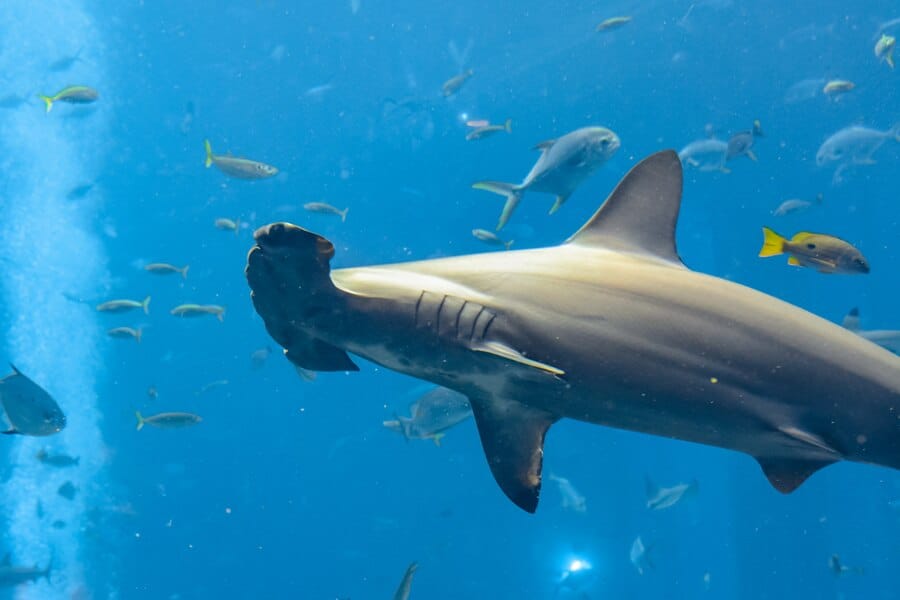
4- Great White Shark
Furthermore, the fourth type is Great White Shark. They are the scariest type of sharks. It is also the largest of all the predatory sharks in the ocean nowadays, measuring about 20 feet long and weighing up to 6,600 pounds. Thus, they are so huge and fearful. They have a great trait as can smell one drop of blood in 25 gallons of water. Moreover, their mouths are lined with up to three hundred sharp teeth arranged in several rows. They eat other sea creatures and sea birds. The larger white sharks also eat sea lions, seals, and small-toothed whales. We can find this type of shark in South Carolina.
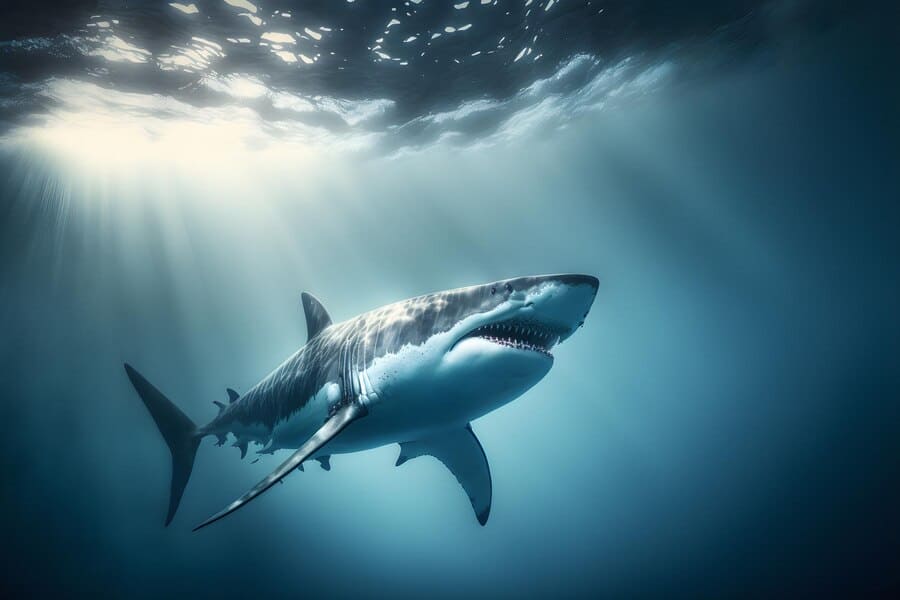
5- Lemon Shark
There is also a type of shark which is called lemon shark, which is called by that name due to the yellowish tint in its skin. The lemon sharks are the most captured as they can be kept in captivity for long periods. Although they have very poor vision, their nose helps them in detecting the place of the prey, as it contains magnetic sensors. Besides, their weight may reach five hundred and fifty-one pounds and live up to 30 years. They also eat all kinds of fish, lobster, shrimp, seabirds, and other sharks. They may be found in coastal inshore waters from New Jersey to Southern Brazil.
6- Tiger Shark
In addition, the tiger shark is the sixth type of shark. They are named after the tiger because they have stripes all over their bodies and they lose these stripes after reaching adulthood. They are also named Galeocerdo cuvier. Moreover, they can give birth to eighty or more embryos at one time.
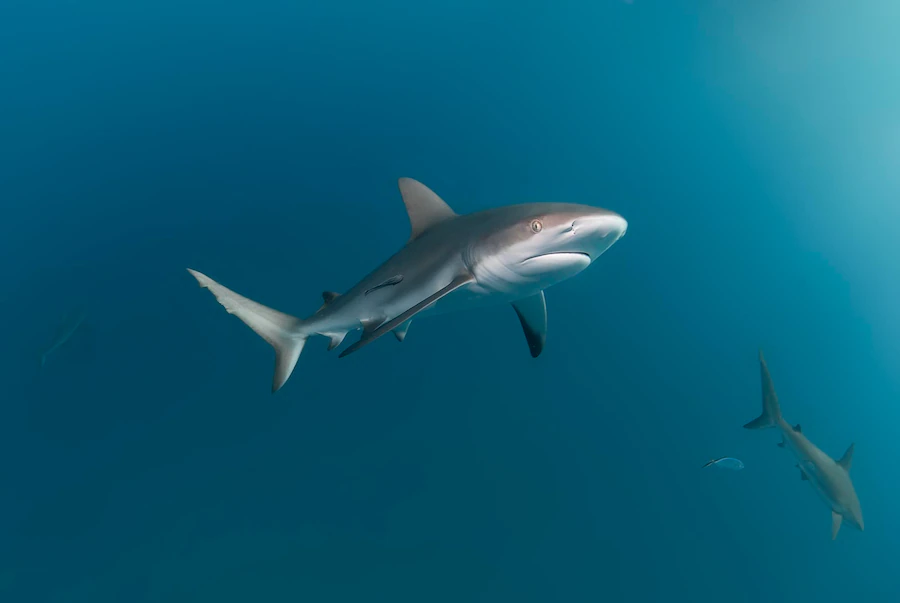
They may reach a length of 18 feet long and weigh up to 2000 pounds. Therefore, they are considered the fourth largest and the second largest predatory On the contrary, tiger sharks are infamous for eating anything they can find, including other sharks, fish, seabirds, dolphins, and sea turtles. Furthermore, groups of that kind can be found in many tropical and temperate waters, especially around the central Pacific islands.
7- Leopard Shark
The next type that we are going to discuss is the leopard shark. These sharks are named after the leopard due to the dark stains on their skin. Moreover, they are domestic sharks as there are no reports of anyone ever being killed or eaten by a leopard shark. The leopard sharks can also be a source of food for humans. Regarding their size, they may reach a length of four to seven feet and an overall weight in the range of thirty-five to forty-five pounds, knowing that females are larger than males.
Besides, the mother leopard shark keeps her eggs inside her body until they hatch. After 10 to 12 months, she gives birth to a litter of 7 to 36 embryos. It keeps the eggs safe inside her to make sure they all hatch. The leopard sharks mainly feed on the sea floor. They live in the Eastern Pacific Ocean from Oregon to the Gulf of California in Mexico and they are usually found in sandy bottoms or muddy bays.
8- Sevengill Shark
There are also Sevengill Sharks which are known by this name because they have seven gills on the side of their bodies as opposed to five. In addition to this, they are often called cow sharks, no-finned sharks, and Perlon sharks. They hunt other aquatic creatures, such as other types of sharks octopuses, bony fishes, and rays. The Sevengill sharks have an impressive set of teeth. The teeth that rest in its upper jaw are sharp, while those in its lower jaw are shaped like a comb.
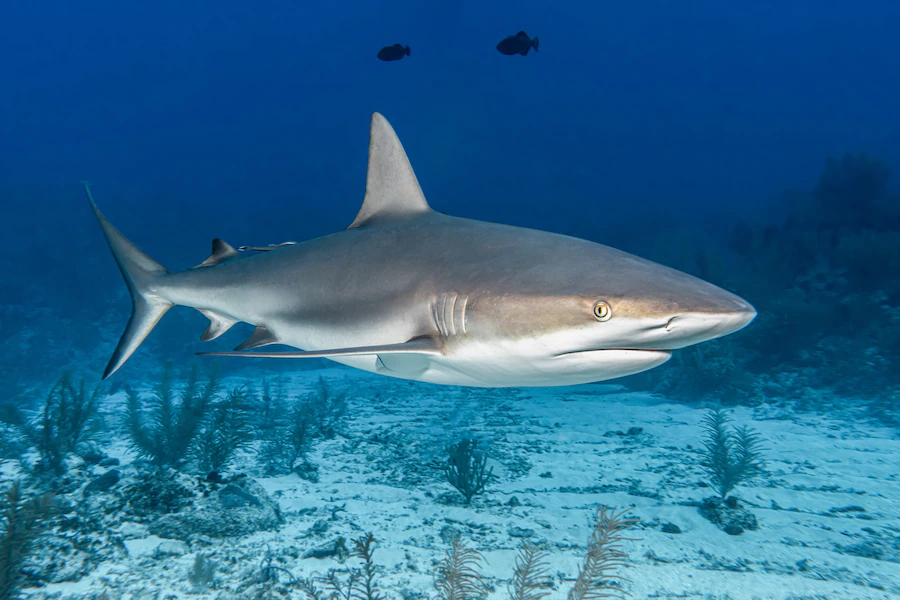
Although the Sevengill gets angry when it is attacked, there is no record of any sharks’ or humans’ attacks in open water from Sevengill sharks. The maximum known length of the Sevengill shark is 9.8 feet and the maximum reported weight is 236 pounds. Their life expectancy of this is about 50 years which means that they live a long period. The females can give birth from eighty-two to ninety-five per time. We can find this type of shark in the temperate waters of the Pacific and South Atlantic oceans.
9- Blue Shark
Furthermore, the blue shark is an important type of shark. It is also known as the great blue shark. Moreover, most adult blue sharks measure 5.6 to 7.2 feet long, however, some may grow up to 13.1 feet in length and weigh nearly 454 pounds.
The females of this type are slightly larger and have thicker thin skin than the males of their kind. The females can labour twenty-five to fifty embryos. They can live about fifteen or sixteen years in the wild while they can live eight years in captivity. Besides, Fishes, shrimp, crab, and squid are the components of their diet system. They also hunt sea birds and eat dead wheals.
The blue sharks are not aggressive or violent but they are dangerous to human beings and they are engaged in several human attacks. Regarding their number, the population of blue sharks is relatively smaller in the Atlantic Ocean and the Indian Ocean than in the Pacific Ocean.
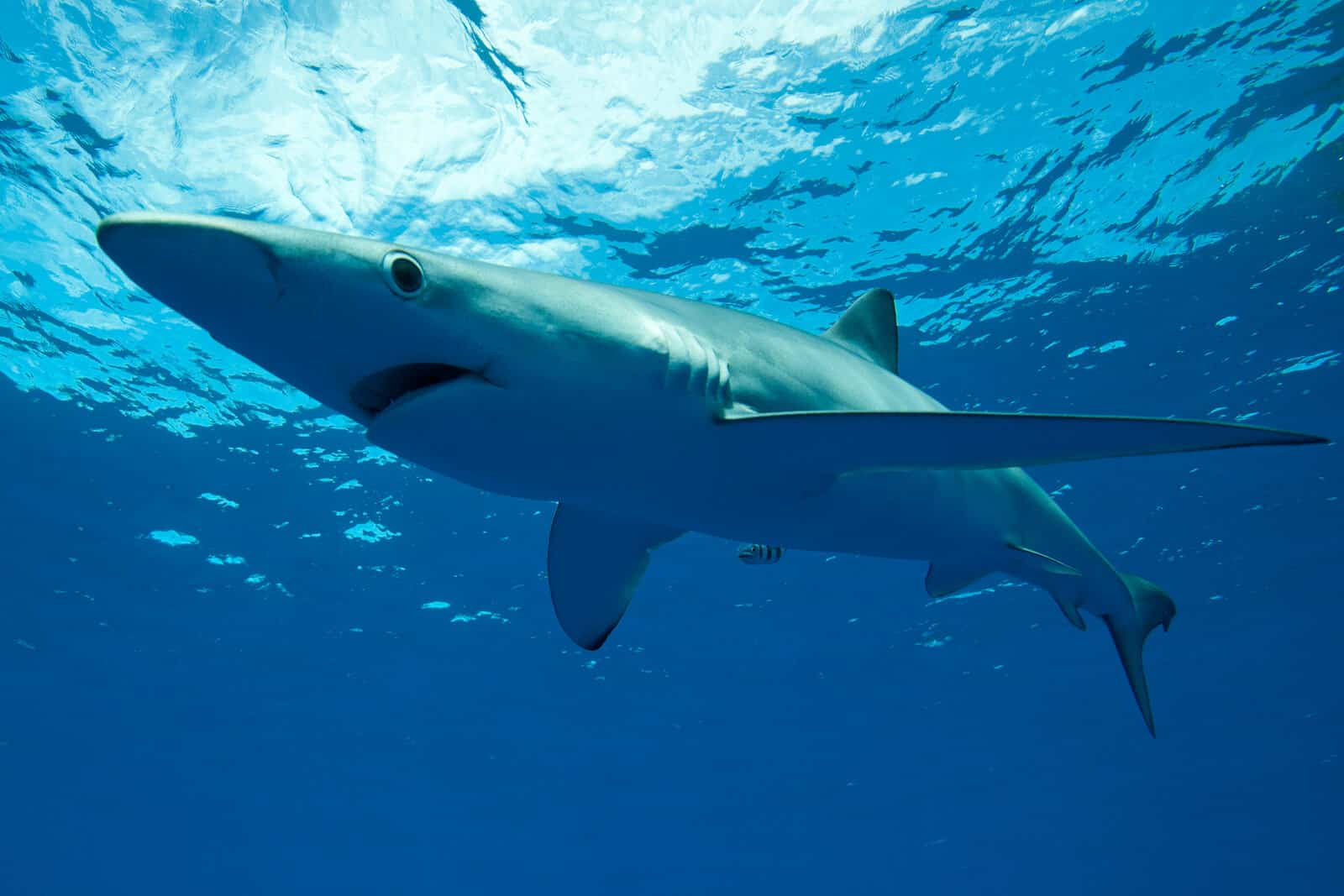
10- Angel Shark
Then, we will tackle the Angel shark as a ray that’s because it looks like a ray. There are other names for Angel shark, such as the Monkfish and the sand devil. They have many wonderful traits, such that their hidden bodies help them in catching their prey and they are characterized by flattened heads and bodies. When prey is nearby, they use their powerful suction to grab it within 1/10 of a second.
They are on the list of endangered sharks as they are considered the second most threatened family of sharks and rays in the world. Concerning their size, they are around five feet long, weighing about seventy-seven pounds. This kind of shark has many species, such as the African angel shark, Clouded angel shark, and the Japanese angel shark. Moreover, the habitat of Angel sharks is in the Mediterranean Sea and eastern Atlantic. Most species prefer shallow temperatures and tropical waters while few species prefer deep water.
11- The Common Thresher Shark
In addition, the Common thresher shark is one of the most dangerous sharks. It is also called Atlantic thresher. They are brown, grey, blue-grey, or blackish on the back. The most recognizable feature of this shark is its tail which looks like a sickle and the upper part of it is extremely long, about half the length of its body.
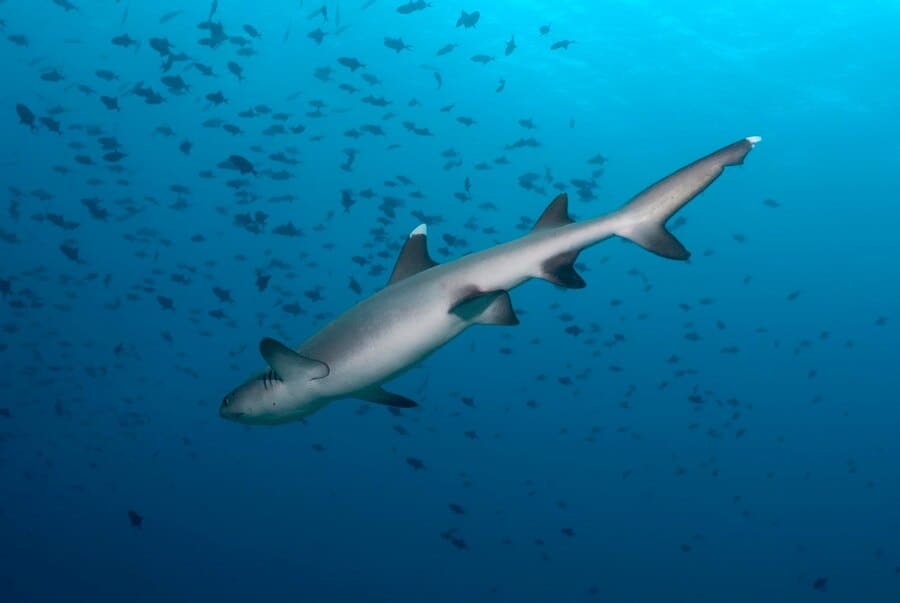
The Common thresher sharks use their tails to collect and stun the Fish before attacking them. Besides, they are jumping high out of the water. These sharks are about 5 feet long at birth and grow 1.6 feet per year and the maximum announced the length of the thresher shark is 24.9 feet while the maximum weight recorded is over 750 pounds.
Moreover, they mainly depend on Bony fish in their feeding process as Bony fish represent ninety-seven of their diet system. The Common thresher sharks live a long time nineteen to fifty years which means that they have a long life cycle. Common thresher sharks are aggressive predators that feed on Mackerel and occasionally on squid and seabirds. This kind of shark is often found in temperate waters around the world, such as the northwest Atlantic Ocean and they range from Newfoundland to Cuba.
12- Silky Shark
Furthermore, the silky shark is another type of shark that has different names, such as blackspot shark, grey whaler shark, olive shark, ridgeback shark, sickle shark, sickle-shaped shark, and sickle silk shark. This type of shark is called by this name due to the smooth texture of its skin. Besides, the silky sharks have distinctive shape of teeth.
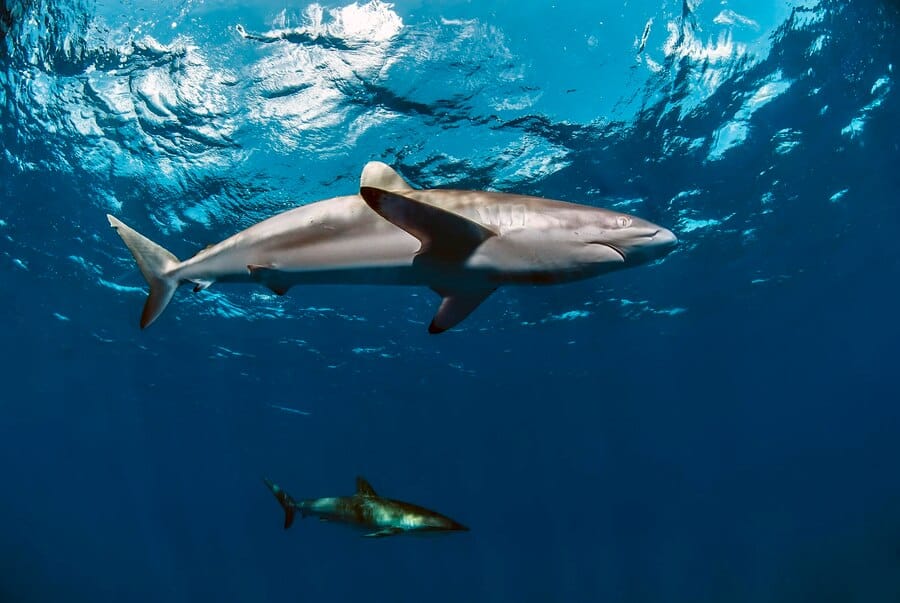
They have between fourteen to seventeen teeth on each side of their upper jaws, and these teeth are notched or serrated rather than concave, which is the condition in most other species of sharks. Silky sharks are the largest members of their gender, they can amount to 346 kg in mass and 3.5 m in length. Females are larger than males whereas female silky sharks range from seven to seven and a half feet in length and male silky sharks range from six to seven feet.
The life span of a silky shark may reach twenty -three years. A female shark can give birth from two to eighteen embryos. Silky sharks feed on different species of fish, squid, and pelagic crabs, including red crab, jumbo squid, and mackerel. This type is located in the Atlantic Ocean, the Pacific Ocean, and the Indian Ocean.
13- Galapagos Shark
Additionally, the Galapagos shark is another type of shark. These sharks are named after the Galapagos Islands where scientists first discovered them. It is also called grey reef whaler. Moreover, they have great quality as they can turn their stomachs inside out. This helps them get rid of the food they must not have eaten.
The Galapagos sharks are relatively huge as they can reach a length of twelve feet and one hundred eighty-nine pounds. This kind eats bottom-dwelling rays, bony fishes, shrimps, and octopuses. Besides, these sharks have a strong sense of smell because they can detect blood in a concentration of only one part per million. The colour of the back surface of the Galapagos shark is s brown to greyish brown, and its underside is lighter. This colouration is similar to the colour of another shark called the dusky shark.
Their life expectancy has been estimated to be twenty to twenty-five years. The females give birth to four to sixteen embryos every two or three years. The young sharks stay in shallow water to avoid being eaten by larger sharks as it is known that Galapagos sharks may eat their young sharks. In addition, these sharks prefer warm, clear waters near the reef systems or oceanic islands and they are concentrated in tropical regions of the world’s oceans.
If you enjoyed learning about this facinating animal why not check out more fantastic facts about other animals: Koalas, Land Animals, Raccoons, Moon and Sun Bears, Rats, Sheep, Chickens, Cats, Pandas, Monkeys and Whales.
Why not subscribe to our LearningMole Library for as little as £1.99 per month to access over 1300 fun educational videos.


Leave a Reply